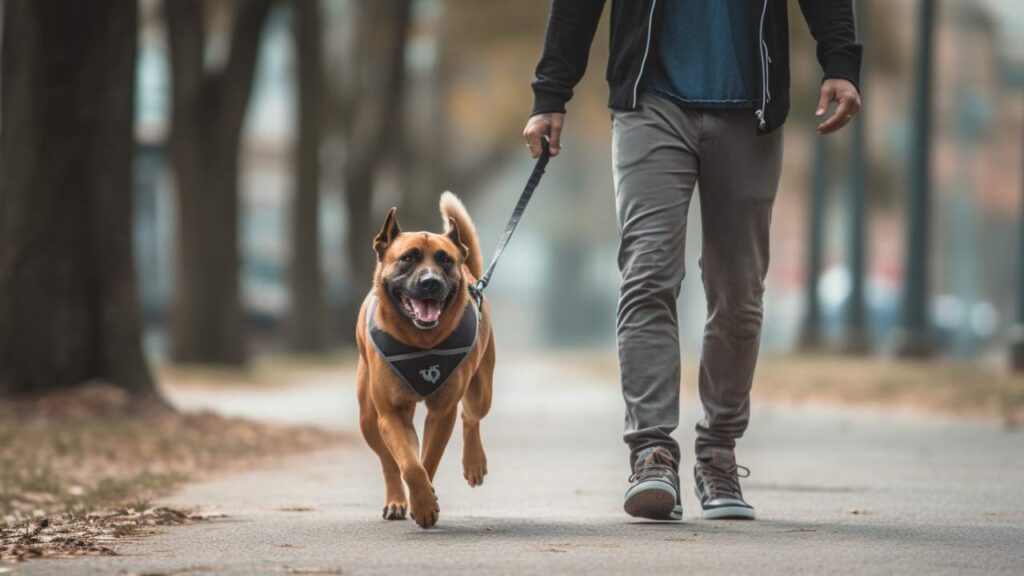When encountering a stray dog, they may wonder how long it will take before the animal is legally considered theirs. This is a fundamental question for those who have found a furry friend they wish to adopt.
The time it takes for a stray dog to become someone’s pet legally varies by state and can range anywhere from a few days to several months. These are just a few of the challenges with adopting rescue dogs.
Some states have statutes requiring a person to wait only three days before claiming ownership of a stray dog, while others may mandate a waiting period of up to 90 days. This waiting period is designed to give the original owner a chance to come forward and reclaim their lost pet.
After the waiting period, if no one has claimed the dog, the person who found it can begin the process of becoming the official owner. This process usually involves having the dog checked for a microchip, notifying local animal agencies, and ensuring the dog is not listed as missing.
The specifics of the legal process can also depend on the local regulations, which aim to facilitate responsible pet ownership and reduce the number of stray animals.
Determining Ownership

When someone finds a stray dog, establishing legal ownership is a layered process influenced by specific state laws and local ordinances. Defining legal ownership, knowing local laws, and meeting requirements are essential.
Legal Definition of Ownership
Ownership of a dog is legally recognized when an individual establishes themselves as the dog’s keeper, provided they comply with local and state regulations. Legal ownership includes responsibility for the dog’s welfare and adherence to all applicable animal laws.
Local Stray Dog Laws
Every state has its own set of laws that govern how long a person must wait before a stray dog is considered legally abandoned, ranging from a few days to several weeks. Local animal control regulations usually require a found dog to be reported and may dictate a mandatory waiting period for the original owner to come forward.
Requirements for Claiming Ownership
Claiming ownership typically involves a few key steps:
- Reporting the found dog to local authorities or shelters.
- Waiting through the mandatory hold period, which allows the original owner a chance to reclaim the pet.
- Providing care for the dog during the hold period may include vaccinations and licensing as per state law.
After these requirements are met, an individual may be able to formally adopt the dog and obtain legal ownership.
Awaiting The Mandatory Holding Period

Before a stray dog can be considered legally yours, there’s a specific timeline that’s adhered to by animal shelters. This timeframe is critical to give original owners the chance to reclaim their pets.
Shelter Holding Policies
Animal shelters operate under state-specific holding policies that dictate how long a stray dog must be kept before it is eligible for adoption. These policies ensure that a missing pet has a reasonable opportunity to be reunited with its owner.
For example, some shelters are required by law to hold impounded animals for a minimum of five to seven days, while others may have a shorter window.
Required Waiting Time
The waiting time before a stray dog can be legally adopted varies:
- Minimum: Typically 3 days
- Maximum: Often up to 7 days
Depending on the state, this period allows owners to come forward and claim their lost pets. After this, if no owner has been found, the dog may be legally adopted.
Taking Responsibility

When someone finds a stray dog, they must consider legal obligations such as providing care, notifying local authorities, and attempting to locate the dog’s original owner.
Providing Care
Once a person finds a stray dog, they are responsible for meeting its basic needs. This includes food, shelter, and necessary medical attention. Ensuring the animal’s safety and health is a key part of taking responsibility for a found stray.
Reporting to Local Authorities
They should report the found dog to local authorities, like animal control or a shelter, within a reasonable timeframe. Each state has laws governing the timeframe a stray must be reported. For instance, some states require immediate notification, while others may provide a few days window.
Efforts to Find Original Owner
They must make a reasonable effort to find the dog’s original owner before claiming ownership. Posting flyers, checking for a microchip, and creating online posts on social media or lost pet websites can aid in this process. Efforts to find the original owner are not only ethical but often a legal requirement as well.
Legal Adoption Process

The legal adoption process for stray dogs varies by state but follows specific protocols. Whether adopting from a shelter or off the streets, a waiting period and legal procedures must be followed.
Adopting from Shelters
When someone adopts a dog from a shelter, they are typically required to go through a waiting period of around 5-7 days. This period allows a potential owner to claim the animal.
Shelters also ensure that the dog has been vaccinated and often neutered or spayed before the adoption is finalized. Adoption costs from Humane Society and other shelters like it include these processes.
Adopting from the Street
If a person finds a stray dog on the street and wishes to keep it, they must first report the find to local authorities or a veterinarian who can scan for a microchip.
The waiting period for a stray to be legally adopted can be as short as three days or as long as 90 days, depending on state laws. This time frame allows an owner to come forward and claim their lost pet.
Ownership Documentation
When a person takes in a stray dog, getting the proper documentation is crucial to establish legal ownership. This paperwork is essential if the original owner comes forward or in the case of legal disputes.
Proof of Ownership
Proof of ownership is typically established through a variety of documents. They should have:
- Adoption papers: If the dog is adopted from a shelter or rescue organization, these serve as initial proof of ownership.
- Vet records: Documentation of vaccinations, treatments, and visits can support an individual’s claim to a pet.
- Purchase receipts: If any purchases have been made for the dog, such as a collar or dog food, those receipts may be useful.
Microchipping and Registration
Microchipping a dog is a reliable method of establishing ownership. A microchip should be registered with current contact information, which can be a definitive way to link a dog to its owner. Registration with local authorities or a national database further strengthens the claim of ownership. This includes:
- Local licensing: Dogs are often required to be licensed in the jurisdiction where they live.
- National pet registries: These databases store microchip information which can be quickly accessed to determine a dog’s owner.
Potential Legal Disputes
Navigating the ownership of a stray dog can lead to complex legal disputes, especially when a previous owner resurfaces or when there are conflicts regarding the adoption process.
Previous Owner Claims
When a person claims a stray dog, they may face legal challenges if the previous owner reclaims the pet. The laws vary by state, with some requiring a waiting period of only three days, while others may extend up to 90 days.
Should the original owner come forward after the new guardian has assumed responsibility, the situation often becomes legally convoluted, potentially requiring court involvement to resolve ownership rights.
Disputes and Legal Actions
An individual may believe they’ve lawfully acquired a stray dog, but legal actions can ensue if someone else disputes their claim. Disputes could arise from another person caring for the dog or a conflicting microchip registration.
These cases might lead to reconciliation efforts, such as mediation, or escalate to lawsuits where a court decides the dog’s rightful owner based on evidence like vet records, microchip data, or witness testimony.
Long-Term Considerations

Adopting a former stray dog involves more than just providing a loving home. One must consider both the ongoing care requirements and their financial commitment.
Caring for a Former Stray
When someone brings a stray into their home, they should prepare for a period of adjustment. It might need behavioral and other dog training methods to acclimate living indoors, and routine visits to the vet are crucial to monitor the dog’s health and address any issues resulting from their time without a home.
Financial Responsibilities
The financial aspect includes the day-to-day costs of food, toys, and grooming and potential veterinary expenses. Owners should consider setting aside funds for emergencies, as former strays may have unforeseen health problems due to their past living conditions.

